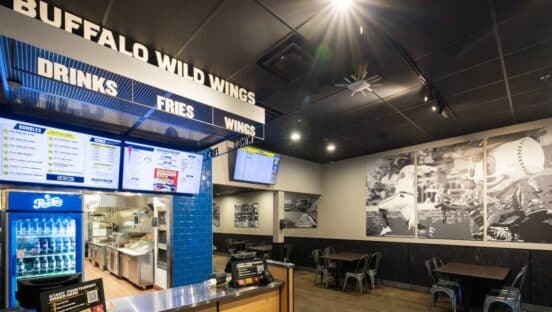It’s no secret that the restaurant industry is experiencing a shift. Five years ago, the sky was the limit. Innovation was everywhere, and new concepts and franchises continued popping up. Now, the industry is arguably facing one of its most difficult times. Minimum wage is increasing, consumer needs are changing and staffing is at an all-time low. That, coupled with the ever-popular gig economy, where people are gravitating toward freelancing rather than serving customers over the counter, leaves the quick-service industry scrambling to constantly recruit and offer competitive benefits. What was once a focus on growth has now transformed to a defensive mode for survival.
When looking into solutions, loss prevention generally flies under the radar. Commonly thought of as protecting assets and catching shoplifters, the industry has a reputation that precedes itself, and it is not always in a positive manner. Loss prevention is more than just a monetary term. It can be anything: sales, customers, brand reputability, productivity … the possibilities are endless. The goal in an effective loss prevention strategy is to actively prevent losses from taking place and find ways to create opportunity. Of course, this happens with theft and product shrinkage, but there is a completely untapped sector of loss that is being left behind. Quick-service restaurant professionals must work toward re-designing loss prevention’s preconceived image and use it as a profit strategy, or risk being left behind as well.
One way loss prevention can be used to increase profit is by creating a culture of accountability within an organization. It may seem like a small step, but by monitoring the transaction and video data quick-service professionals already have on hand, these company leaders can decrease turnover significantly. Employees know they are being actively monitored, giving the best employees opportunities to be acknowledged and lesser performers with opportunities for training or re-assignment. Between staffing issues and rising labor costs, many quick-serve brands are creating new models where less labor is needed to complete a transaction, so every employee and their morale counts. From crew positioning to managerial efforts, the day-to-day actions inside of a restaurant tell a story about the business and where improvements can be made.
Another interesting loss prevention avenue to explore, and one that is often overlooked, is social media reviews. It used to be that what happened inside of the restaurant would determine its fate. Now, the reviews on social media can deter a customer from ever stepping foot inside of the establishment. We are in a time where people are more likely to trust a stranger’s opinion than their own eyes. The whole point of loss prevention is to prevent loss, and that includes potential loss due to a brand’s online presence. A good social media strategy is very much a loss prevention strategy, and this can make or break a quick-service restaurant brand in today’s digital age.
The quick-serve industry is one of the most inclusive areas out there. It is still the quickest and easiest way to climb the corporate ladder without any experience or education needed. Regardless of sex, race, social class, home country and more, the quick-serve industry provides the same opportunity for everyone. Take the co-founder of our company, Kelly Del Fuoco, for example. She began as a crew member for Dunkin’ when she was 16, worked up to shift leader, then an assistant manager, and then a manager by the age of 18 managing a high-volume store. This experience led her to eventually own her own business.
Because the industry is one of the most inclusive, it makes taking a loss that much harder. Loss prevention is about more than keeping profit on the rise, and it goes far beyond the two avenues above. It includes keeping hardworking employees inside the organization where they can grow and thrive. It is essential that quick-service professionals consider changing the conversation about loss prevention. It’s not just about preventing theft anymore. The industry is a livelihood for many, and by putting a strong loss prevention strategy in place, we can keep it that way for years to come.












